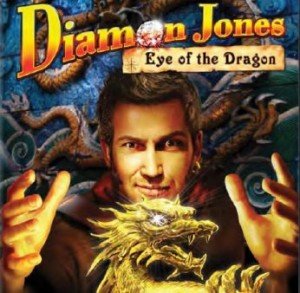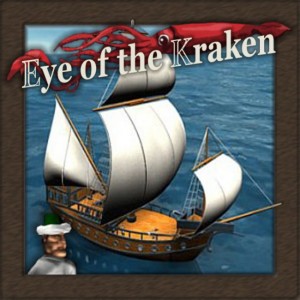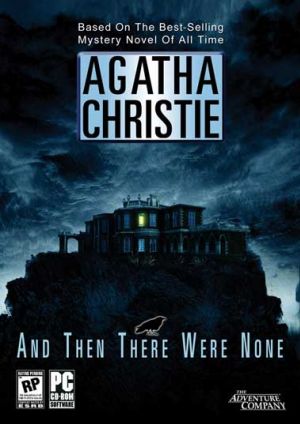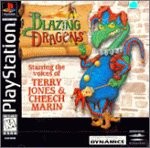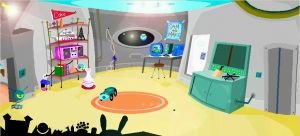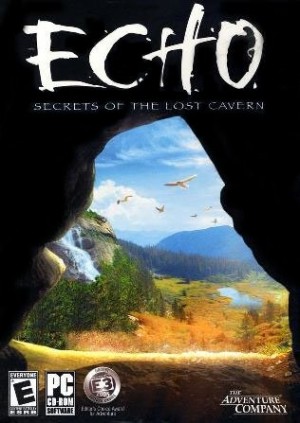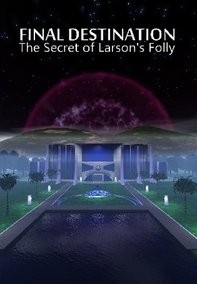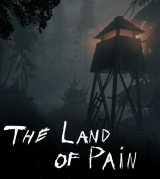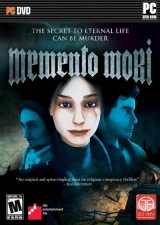Review for Diamon Jones: Eye of the Dragon

Barely having kicked the sand off his feet from his last adventure, Amulet of the World, Diamon Jones has now taken himself off to the Far East in Eye of the Dragon. This land of new opportunities seems as reluctant to offer up its treasure as his previous locale, with Diamon once more starting out in archaeological failure. Sad to say, his bad luck isn’t the only thing to come along for the ride. Whilst he evidently managed to abandon a handful of unfortunate gameplay issues in Egypt, far too many have stowed away in his luggage to once more plague both Diamon and players alike.
The sequel commences with our luckless protagonist stuck in a bar in Shanghai with no funds to keep him in beer. The barkeeper offers to solve this problem if only Diamon will retrieve a mystical seal from his pawnbroker brother. It will come as no surprise to find this relatively mundane task soon leads to greater adventure, as Mr Jones and an unwelcome entourage head off in search of the eponymous ‘Eye of the Dragon’, an ancient artifact of immense power. Certainly this is not the most original of stories, as quests for artifacts of great power are a common theme in adventure games. What makes this an even less original choice than normal is that it is precisely the same premise as the first game, right down to beginning in a tavern. Even Indiana Jones, on whom this series continues to be heavily based, managed to mix it up more than that.
Alas, the plot continues to wend its predictable way through a number of clichés. There’s the map, torn into four pieces, that is the sole means of locating the fabled Lost City (this in spite of the fact that Diamon’s feuding brother companions are shown finding the seal in the opening cutscene. Did they somehow forget the way back?). The Lost City itself, whilst almost entirely ruined, still manages to house enormously complex mechanisms in perfect working order. And let us not forget a villain seizing the Eye for themselves, just when it is in our hero’s grasp. The characters are equally uninspired, mostly being two-dimensional and some representing such appalling stereotypes they might be considered offensive. The majority of the Chinese characters are depicted as venal and stupid, especially the Shanghai police force. This impression isn’t helped by their physical depiction as fat men with droopy moustaches and straw hats.
Those searching for a respectable piece of storytelling aren’t the only ones in for disappointment. The game world constantly displays lapses of logic that blow all sense of immersion. When you first go to the pawnshop there is nobody there, though the front door is unlocked. The shop is strewn with numerous items, many of which look quite valuable, and yet no one is around to stop kleptomaniac adventure gamers wandering off with whatever takes their fancy. This peculiar approach to retail is mirrored in later shops where I was able to walk out with what I wanted right in front of the owners’ eyes without ever being asked to pay. It would seem 1930s Shanghai is a shoplifter’s paradise. Perhaps a lack of confidence in the police has lead to this. One of them blocks you from entering a particular street until you don the flimsiest of disguises. Having passed once, the policeman will then allow you to go freely back and forth, whether you wear the disguise or not. This lack of logic extends even to the minigames that appear throughout, including a telegraph puzzle where you only need to get a percentage of the dots and dashes correct, even though any errors would almost certainly lead to a garbled message.
Minigames were a major feature of the first episode in the series, and they are just as common here. In an improvement over the original, none of these will force you to reload, as failure simply results in a restart of the game in question. This is a boon, as many of the games will require several attempts to achieve victory. Only luck will get you across the randomly rising and falling barrels in what must be the world’s most toxic sewage, which kills you the moment your feet touch the surface. There are no less than three fighting sequences, including one with a ninja (whose presence in China instead of his native Japan is never explained). The controls for these are limited to timed pressing of the two mouse buttons, not even creating appeal for those who enjoy fight games as well as adventures. Even the minigames without fatal consequences often prove frustrating. In the latter part of the game, you try to move a large bin underneath a window with a well-timed click as a pointer slides back and forth along a coloured meter. Apply too much power and you overshoot, leaving you to repeat the exercise back and forth until you apply just enough force to leave the bin in the correct position. Others are simply boring, including a dogfight where the other plane simply weaves back and forth without ever shooting back, leaving you to slowly whittle away its energy as you try to follow its dodging.
On the plus side, a small handful of minigames I did find enjoyable. A Mahjong game, where tiles are removed in pairs from the outer edges of a stacked pattern, was a pleasant diversion (at least until I realised that a simple keystroke option makes it impossible to fail). A challenge to use a knight to take all pieces scattered across a chess board required careful planning to avoid dead ends, and arranging tiles to unlock a door in the Lost City proved a satisfying challenge. Sadly, these examples are very much the exception rather than the norm. The minigames are supposedly playable from the main menu once unlocked. For some reason, however, only the games unlocked during the current playing session are ever available, so returning to the game later won’t grant you the expected access to any games prior to that point.
In the more traditional point-and-click part of the adventure, non-minigame puzzles are almost entirely inventory based, most involving either giving items to other characters or using them on scenery hotspots. You’ll perform such tasks as taking recipe ingredients from a shop (mixing the recipe is a minigame, mind you), searching out incongruous objects on an airship to fix holes in the balloon, and setting numerous things on fire with your trusty lighter.
Fortunately, there have been some attempts to improve operation over the first game. The pick-up cursor makes an animated grabbing motion that is quite distinct from the inanimate default cursor, making it much easier to spot when you are pointing at a collectible item. Also, there is a bright and clearly discernible glow when you place your cursor over items you can interact with. Any object with the potential for interaction always creates this response, even when actual interaction is impossible at that time, with Diamon simply commenting on the item in question in the meantime. This does not entirely do away with pixel hunts, as some hotspots and items are small and difficult to spot against the detailed backgrounds. There are also occasions where lining up the cursor proves troublesome, such as trying to retrieve a small lock-pick from the door of a car, as both the lock-pick and the car are interactive objects. In a welcome new feature, double-clicking on anything will cause Diamon to run instead of walk, making getting around relatively easy.
The first game was fully voiced, but in what might be considered a step backwards, Eye of the Dragon largely restricts voices only to the infrequent cutscenes. Given the quality of the voice work in the brief segments it appears, however, I would say this is a wise choice. With the exception of Diamon himself, the performances are almost uniformly poor. Then again, this decision will leave players relying on the subtitles, and these prove to be as badly translated as before. The garbled grammar of such phrases as “Our chances grows up” and “Supposing an aircraft would fell in it” might just have been acceptable for some of the foreign characters. However, this continues throughout all the text, including the abundant dialogue of the undeniably English Diamon Jones. This is made worse by the painful and forced attempts at humour, exemplified in such “comic” character names as navigator Forgotto Whatadoo and injured pilot Imareadi Todiee. As a comic adventure this game largely falls flat, the unintentional mangling of English giving me far more laughs than any of the intended jokes.
There is music throughout the game which generally fits the scene, such as oriental overtones in the opening Shanghai section. Whilst not grating, I didn’t find this overly inspiring either, mostly having the feel of background elevator music. Some sound effects are also in evidence, with Diamon’s footsteps sounding as he walks and wind rushing past the airship when it’s aloft. Occasional incongruities crop up even here, however, with the hammer-struck bell in the pawnshop giving the sound of a rotary ringer.
The one section in which the first game excelled, the graphics, is fortunately also carried over into the sequel. From the seedy dockside bar at the start of the game through the luxury cabins of an airship and on to the ruined grandeur of the Lost City and beyond, there is beautiful detail on show. The environments are filled with furniture and decoration appropriate to each setting, like finely patterned carpets and luxury seating on the airship, in stark contrast to the tumbled stone-work and strange carvings of the Lost City. The only downside to this detail is that it makes smaller interactive items difficult to spot, especially since many of these are in places you wouldn’t expect to look..
All scenes come with background animation, including idle animations for Diamon and non-player character alike. A Shanghai policeman fruitlessly tries to rid himself of a pesky fly and a less-than-bright henchman constantly fiddles with his outsized machine gun. The character animations are well-performed, and interacting with the environment is fully animated. In fact, the physical humour works better than the written humour, with Diamon’s struggle to find a comfortable way to sit at a floor-level table being a highlight. It’s also nice that the mini-portraits that appear next to the character dialogue mimic actual character positioning, with the portrait’s head pointing in the same direction when the character is looking down or to the side.
Ultimately the best I can really say about Diamon Jones: Eye of the Dragon is that it appears to be a step in the right direction. Some of the problems arising in the first game have been addressed, but not nearly enough to make this a game I can readily recommend. The poor translation is a constant annoyance that faces the player throughout their journey, and the minigames are all too often badly designed exercises in boredom or frustration. Similarly, I was left uninspired by the minimal plot and never really felt any pressing desire to help Diamon succeed in his quest for glory. It does have its moments during the six or so hours of play time, so if you have nothing better to play, it might be worth a look at its downloadable budget price, but most are better off leaving it buried like the ancient treasures its protagonist seeks.




